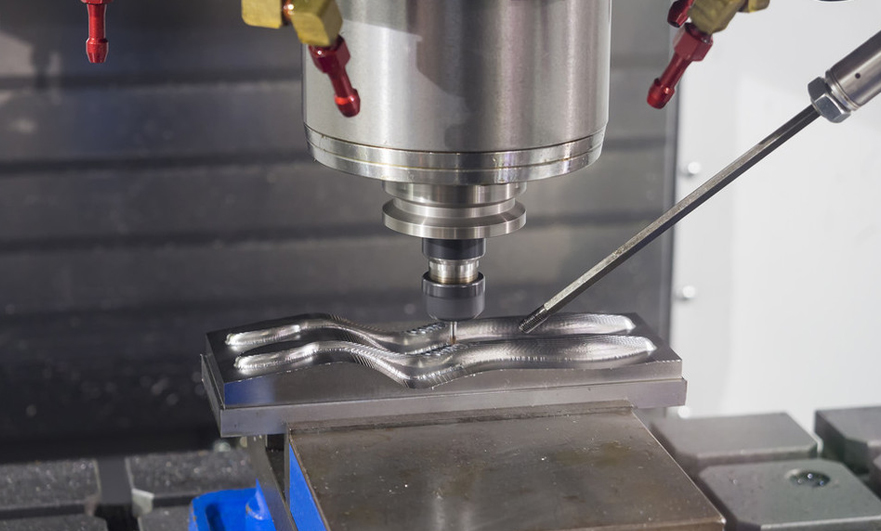15 years one-stop China custom CNC machining parts factory

Hey there I’m VMT Sam!
With 25 years of CNC machining experience we are committed to helping clients overcome 10000 complex part-processing challenges all to contribute to a better life through intelligent manufacturing. Contact us now
 120 |
Published by VMT at Dec 04 2021
120 |
Published by VMT at Dec 04 2021
Stainless steel has a wide range of applications in the industrial and consumer markets due to its excellent corrosion resistance, high strength and beautiful appearance.
But how does stainless steel go from a pile of waste or refined ore to its final shape and application? Most Stainless Steel CNC Machined Parts were used in a similar way before starting CNC machining. This process-and the exact composition of the steel alloy determines many characteristics of CNC machined parts.
Therefore, to understand how stainless steel is produced, we must first study its composition in depth. Stainless steel is an iron-containing alloy, a substance composed of two or more chemical elements-widely used in various occasions. Due to the chromium content, it has excellent discoloration or rust resistance, usually 12% to 20% of the alloy. In addition to many proprietary alloys produced by different stainless steel manufacturers, there are more than 57 types of stainless steels that are recognized as standard alloys.
These many types of steel are used in almost endless applications and industries: bulk material handling equipment, building exteriors and roofs, automotive components (exhaust, trim/decoration, engines, chassis, fasteners, fuel pipes) , Chemical machining plants (scrubbers and heat exchangers), pulp and paper manufacturing, petroleum refining, water supply pipelines, consumer goods, ships and shipbuilding, pollution control, sporting goods (sledges) and transportation (rail vehicles), etc.

The North American food machining industry uses approximately 200,000 tons of nickel-containing stainless steel each year. It is used in various food machining, storage, cooking and service equipment-from the beginning to the end of the food collection process. Beverages such as milk, wine, beer, soft drinks and juices are CNC machining in stainless steel equipment. Stainless steel is also used in commercial cookware, pasteurizers, transfer boxes, and other specialized equipment.
It has the advantages of convenient cleaning, corrosion resistance, durability, economy, food flavor protection, and hygienic design. According to data from the US Department of Commerce, the total transport volume of all stainless steel in 1992 was 1,514,222 tons.
There are several types of stainless steel, depending on their microstructure. Austenitic stainless steel contains at least 6% nickel and austenite-carbon-containing iron, has a face-centered cubic structure, has good corrosion resistance and high ductility (the ability of the material to bend without breaking). Ferritic stainless steel (ferrite has a body-centered cubic structure) has better stress corrosion resistance than austenite, but it is difficult to weld. Martensitic stainless steel contains iron with a needle-like structure.
Duplex stainless steel usually contains equal amounts of ferrite and austenite, and has good resistance to pitting and crevice corrosion in most environments. Due to the stress corrosion of chlorides, their crack resistance is also better, and their strength is about twice that of ordinary austenite. Therefore, duplex stainless steel is widely used in chemical industries such as oil refineries, natural gas machining plants, pulp and paper mills, and seawater pipeline installation.
Personal Safety:
1. Wear suitable clothes;
2. Remove watches, necklaces, bracelets and other similar accessories before CNC machining;
3. Net or tie up long hair;
4. Eye protection-always wear safety eyes with safety protection frames and so on.
Environment Safety︰
1. Make sure the ground is tidy and free of oil, water, cutting chips and other dangerous materials;
2. Check the aisle to make sure there is no blockage in any direction;
3. Check whether all materials are stored safely, and whether the CNC machining workpieces are in appropriate containers;
4. Do not move the protective device, etc.
Ready To Start Your Next Project?
Get Instant Quote

Request a Free Quote
Send us a message if you have any questions or request a quote. We will get back to you ASAP!